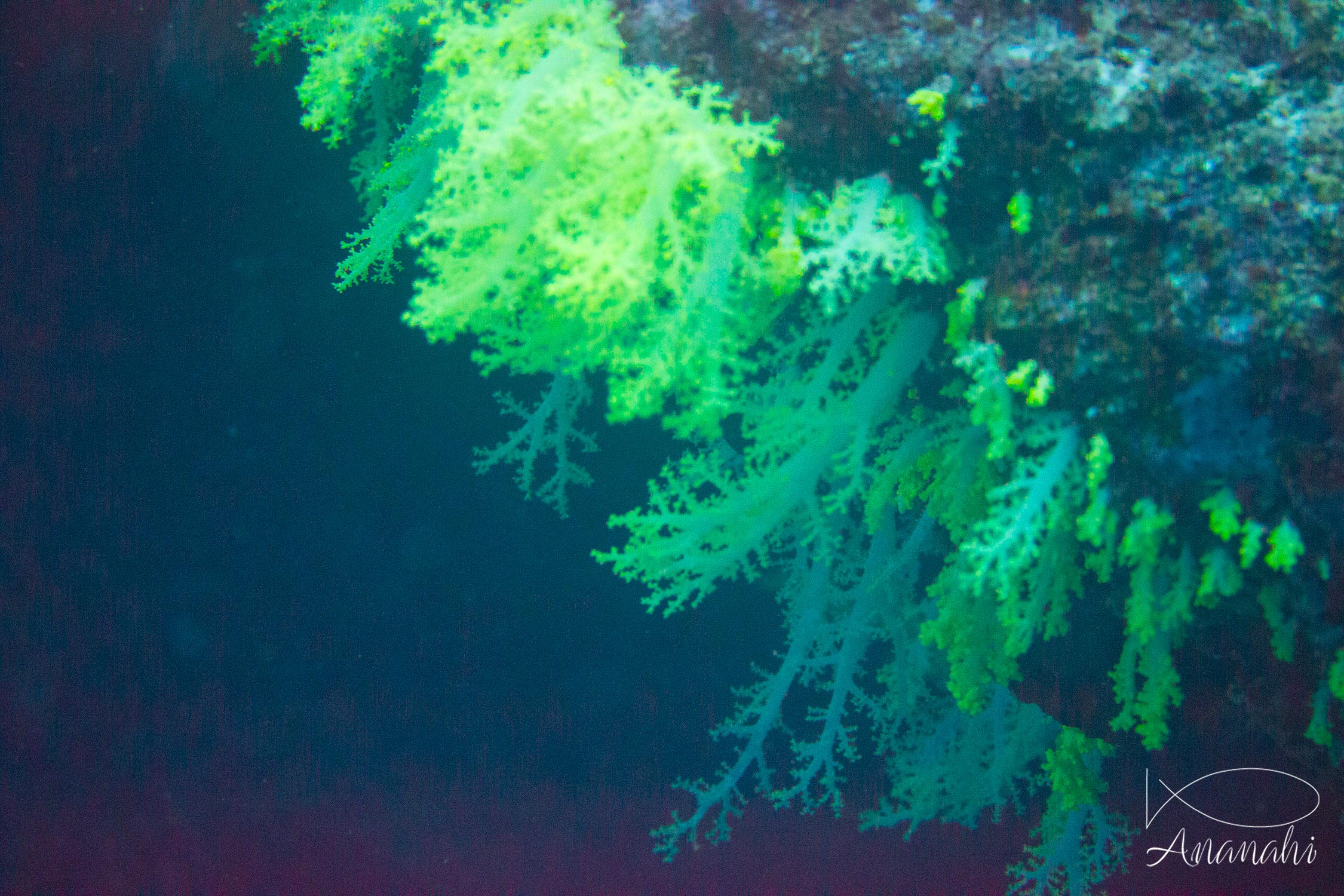
Scientific name: Dendronephthya
Size: Generally from 4 to 20 inches, can reach 78 inches
Color: Variable: white, yellow, pink, purple red
Distinguishing feature: Present where the current is strong (passing, falling, etc.). Trunk and translucent branches, polyps grouped at the end of branches.
Where did we see it: Maldives

Scientific name: Dendronephthya
Size: Generally from 4 to 20 inches, can reach 78 inches
Color: Variable: white, yellow, pink, purple red
Distinguishing feature: Present where the current is strong (passing, falling, etc.). Trunk and translucent branches, polyps grouped at the end of branches.
Where did we see it: Maldives
These corals, like other soft corals, can absorb water to stretch and swell, or extract it to shrink. They deploy at maximum during night, or day when the currents are strong enough.
Small organisms (crabs, shrimps, etc.) can be found here. Some nudibranchs also feed on this coral.
Some sharks can stay motionless on the sand (white tips reef sharks, nurse sharks, etc.).
These sharks don't have to swim to bring oxygen to their gills like other sharks (grey, hammerheads tc.)
The tiger shark has slender marks similars to the lines of tigers, hence its name.
When it is juvenile, these marks are round and not vertical. They change when it grows.
We can hear the bull shark is very dangerous because of attacks near La Réunion island.
However, tens of them are living at 600 feet from the famous beach of Playa Del Carmen in Mexico. And there are no attacks.